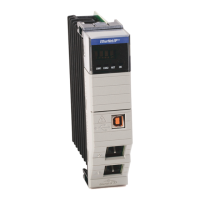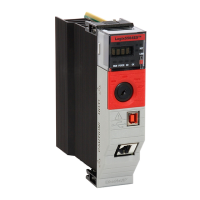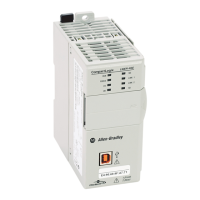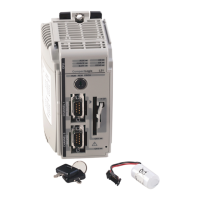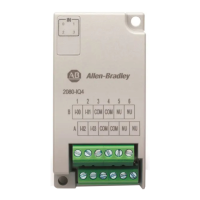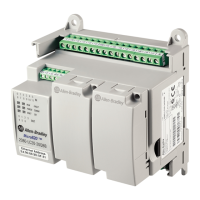90 Rockwell Automation Publication 1756-PM020F-EN-P - January 2019
See also
PLC-2 Communication Commands on page 83
The SLC commands use strictly a logical form of addressing (for example,
file/element/sub-element). For details about mapping the SLC files to
Logix 5000 tags, see the
Logix 5000 Controllers Design Considerations
Reference Manual, publication 1756-RM094.
Logix handles protected and unprotected commands the same way, whether
the access for data is set to Read/Write, Read Only, or None.
Important:
For the SLC Typed Read and Typed Write commands, map the data files to Logix tags of types INT, DINT, or REAL only. Use an SLC or
MicroLogix file data type that matches the data type of the Logix tag.
For INT tags, use file type 85hex (Binary) or 89hex (Integer)
For DINT tags, use file type 91hex (Long - MicroLogix only)
For REAL tags, use file type 8Ahex (Float)
For more information on SLC file types, see the DF1 Protocol and Command Set Reference Manual, publication 1770-6.5.16
.
SLC logical addressing has a limited number of logical address levels so
there are some special concerns.
In a The element number is used as the
One-dimension array Dimension index for addressing (data[elem])
Two-dimensional array Index of the second dimension and the first dimension index is 0
(data[0][elem])
Three-dimensional array Index of the third dimension and the first and second dimension indices are
both 0 (data[0][0][elem])
See also
SLC Protected Typed Logical Read with 3 Address Fields (CMD=0F,
4F; FNC=A2) on page 90
SLC Protected Typed Logical Write with 3 Address Fields(CMD=0F,
4F, FNC=AA) on page 91
SLC Protected Typed Logical Read with 2 Address Fields (CMD=0F,
4F; FNC=A1) on page 91
SLC Protected Typed Logical Write with 2 Address Fields (CMD=0F,
4F; FNC=A9) on page 92
PCCC Commands on page 81
The service is supported for compatibility with SLC modules. It reads data
from the logical address.
Request Format: [byte size][file number][file type][element number][sub-element number]
Commands
SLC Protected Typed Logical
Read with 3 Address Fields
(CMD=0F, 4F; FNC=A2)
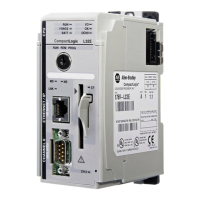
